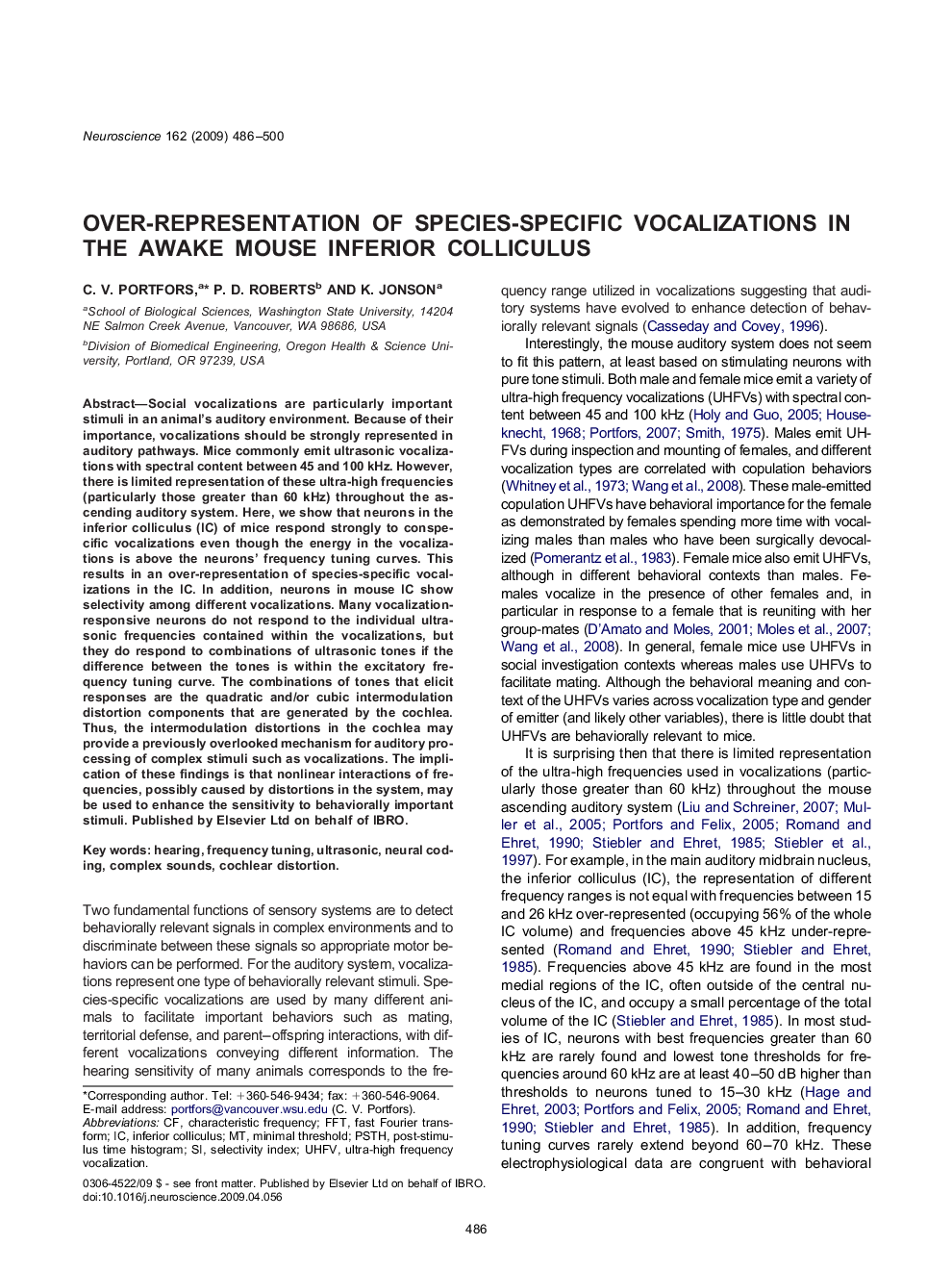| کد مقاله | کد نشریه | سال انتشار | مقاله انگلیسی | نسخه تمام متن |
|---|---|---|---|---|
| 4340178 | 1295786 | 2009 | 15 صفحه PDF | دانلود رایگان |
عنوان انگلیسی مقاله ISI
Over-representation of species-specific vocalizations in the awake mouse inferior colliculus
دانلود مقاله + سفارش ترجمه
دانلود مقاله ISI انگلیسی
رایگان برای ایرانیان
کلمات کلیدی
FFTPSTHminimal thresholdFast Fourier transform - تبدیل سریع فوریهFrequency tuning - تنظیم فرکانسselectivity index - شاخص انتخابیHearing - شنیدن یا شنواییUltrasonic - فراصوت یا اولتراساوند Characteristic Frequency - فرکانس مشخصهpost-stimulus time histogram - هیستوگرام زمان پس از محرکComplex sounds - پیچیده برای تلفن های موبایلNeural coding - کدگذاری عصبیInferior colliculus - کولیکولوس پایین
موضوعات مرتبط
علوم زیستی و بیوفناوری
علم عصب شناسی
علوم اعصاب (عمومی)
پیش نمایش صفحه اول مقاله

چکیده انگلیسی
Social vocalizations are particularly important stimuli in an animal's auditory environment. Because of their importance, vocalizations should be strongly represented in auditory pathways. Mice commonly emit ultrasonic vocalizations with spectral content between 45 and 100 kHz. However, there is limited representation of these ultra-high frequencies (particularly those greater than 60 kHz) throughout the ascending auditory system. Here, we show that neurons in the inferior colliculus (IC) of mice respond strongly to conspecific vocalizations even though the energy in the vocalizations is above the neurons' frequency tuning curves. This results in an over-representation of species-specific vocalizations in the IC. In addition, neurons in mouse IC show selectivity among different vocalizations. Many vocalization-responsive neurons do not respond to the individual ultrasonic frequencies contained within the vocalizations, but they do respond to combinations of ultrasonic tones if the difference between the tones is within the excitatory frequency tuning curve. The combinations of tones that elicit responses are the quadratic and/or cubic intermodulation distortion components that are generated by the cochlea. Thus, the intermodulation distortions in the cochlea may provide a previously overlooked mechanism for auditory processing of complex stimuli such as vocalizations. The implication of these findings is that nonlinear interactions of frequencies, possibly caused by distortions in the system, may be used to enhance the sensitivity to behaviorally important stimuli.
ناشر
Database: Elsevier - ScienceDirect (ساینس دایرکت)
Journal: Neuroscience - Volume 162, Issue 2, 18 August 2009, Pages 486-500
Journal: Neuroscience - Volume 162, Issue 2, 18 August 2009, Pages 486-500
نویسندگان
C.V. Portfors, P.D. Roberts, K. Jonson,